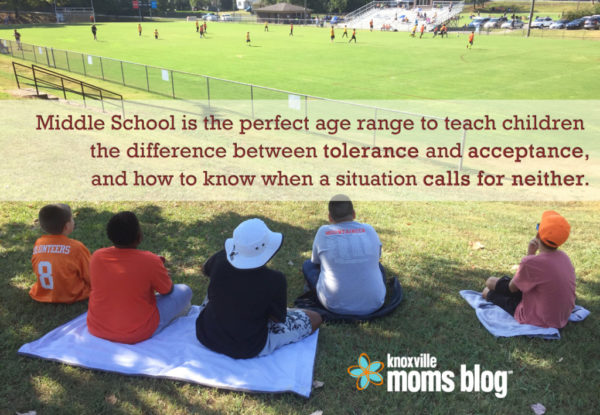There I sat, in the cushy corner of the couch at the end of a terrible weekend for our country. Charlottesville had just happened. It was Sunday night, and I was tired.
Not the sort of tired that can be fixed with a dose of ZzzQuil or a glass of wine. I was tired in my bones, in my brain, and in my heart. When my 13-year-old asks me, “What’s a white nationalist?” I can’t seem to find the words. I felt the same fatigue when it was time to explain the Holocaust and when it was time to talk about 9/11.
Any mother who strives to teach her children about respect, equality, and basic kindness knows how challenging it is to find the right words when hard questions are asked.
At first, teaching respect seems easy. Be nice, we tell our youngest ones. Don’t hit, don’t fight. It is less about embracing differences and more about establishing healthy habits of civility.
Come middle school, the game changes.
Our kids are old enough to know there are different religions in the world. They see race. They see gender and body size. They start forming opinions based on parental influence, conversations with friends, and what they see on television. Since their brains are ripe with questions and curiosities, middle school is the perfect age range to teach children the difference between tolerance and acceptance, and how to know when a situation calls for neither.
Here are some suggestions for doing so:
Insist on appropriate language.
It goes without saying that we ought to reject offensive words outright when referring to people of ethnicities, religions, and cultures other than our own. When our children repeat slurs, knowingly or unknowingly, we should correct them quickly and seriously.
However, sometimes the need for correction is subtle. For example, there was a point last year when I noticed my young teenager consistently referred to people’s behaviors and beliefs as “weird.” When I realized his word choice had become a bad habit, I put my entire focus into correcting him. “Weird is not the word you should use,” I explained. “Just because someone goes to church on Saturday instead of Sunday, it’s not weird. It’s just different from you.”
It took some practice but he eventually changed his language in a way that showed me he understood the difference between acknowledging differences and creating a hierarchy. Giving our kids the right words to say in scenarios like these is essential in helping them develop respectful language.
Explain the difference between tolerance, acceptance, and taking a stand.
By saying you tolerate people of different religions, it’s like you’re saying, “I put up with people from different religions.” Maybe it’s semantics, but tolerance seems best applied to matters of annoyance, such as, “I tolerate high humidity in the summer because spring and autumn in east Tennessee are beautiful.” I don’t love the humidity. I don’t even like it. Therefore, I tolerate it.
People deserve a little more tenderness, which is why teaching acceptance can be a better practice. Acceptance means to acknowledge and welcome the terms of differences. Be it religion, ethnicity, or another identifiable aspect of someone’s personhood, to say you accept someone means you aren’t putting up with them. You accept them as they are, with or without understanding.
Occasionally there is cause to take a stand, and those reasons vary from person to person, family to family, passion to passion. Opportunities may arise unexpectedly, either within a personal relationship or on the national stage, so teach your children to recognize those opportunities and have the courage to act. When we bolster our values with action, we show our kids that respect for one another is a top priority.
Never pass up an opportunity for meaningful conversation.
Some of the best advice I ever received about parenting was this: When your teen or preteen wants to talk to you, drop everything and listen. That advice hasn’t failed me yet, and I’ve found it to be essential when it comes to life lessons in respect.
Case in point: Last year my husband and I went out of town while my mother stayed home with the boys. One afternoon she took them to a Blount County park with a soccer ball in hopes of finding other kids with whom to play. When they arrived they saw a group of boys already on the field, and my oldest son ran right up to them eagerly. But, as he told me later, they were standoffish. Only one of the boys spoke to him.
“He said, ‘You probably don’t want to play with me because I’m an M,’” my son said.
“Do you know what he meant?” I asked.
“Yeah, I think he was saying he’s Muslim, but I told him I didn’t care,” he said. “I don’t think he believed me, so we didn’t play.”
The moment on the soccer field had long passed, but in the retelling of his story I grabbed the opportunity to talk to him about ways he could’ve handled the exchange differently with the hope that I’d increase his confidence for the future.





















Well said.